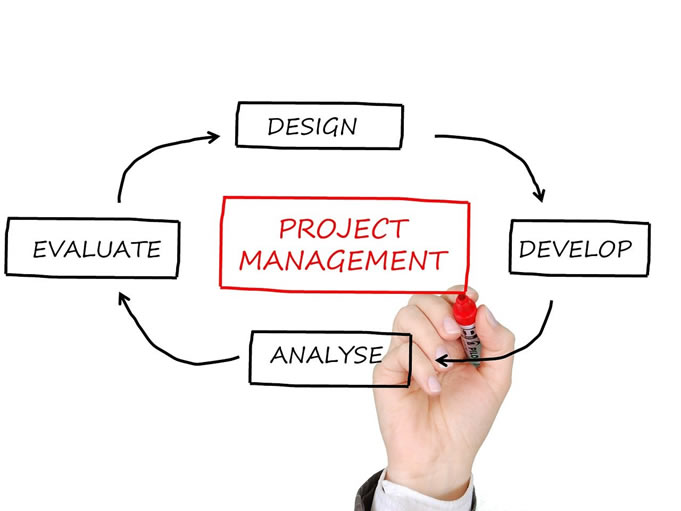
Management by Objectives’ for an Incinerator Manufacturer
It was Peter Drucker, the Management Guru, who introduced in the 50’s the concept `Management by Objectives’ to Business Managers all over the world.
What is this concept? It is defined as follows:
“Management by objectives (MBO) is a strategic management model that aims to improve the performance of an organization by clearly defining objectives that are agreed to by both management and employees. According to the theory, having a say in goal setting and action plans encourages participation and commitment among employees, as well as aligning objectives across the organization”.
It is possible to set and achieve objectives by discussing these between the management and employees so that the objectives are neither too easy nor too difficult. Of course, one has to consider the availability of Men, Machines and Materials to achieve the end results.
Apart from the 3Ms, we also need to be very clear about the Process, which should have been mapped out over a period of time based on one’s own experience and feedback from users.
We do this exercise particularly for big projects. Take for example some of the recently concluded and on-going projects. These involved:
- Incinerators
- Air pollution control equipment
- Chimneys
- Auto loading systems
- Auto de-ashing systems
- PLC controlled operations
- Instrumentation and piping
- Custom containerised incinerators
Manufacturing incinerators could be quite challenging depending on the specifications detailed in the RFQ. This may involve both automatic and manual operations. To achieve the desired outputs, the incinerator making itself has to be a combination of mechanisation and manual work.
We set ourselves and each of the teams, clear goals to be achieved within a stipulated period, providing some allowance for possible delays due to circumstances beyond our control. These goals are set for Design, Production, QC, Projects, Procurement and Assembly teams so that each member of the team is clear about what he/she has to do during the day, week and month. This enables committing to ourselves an internal test and to the client, dates for Factory Acceptance Test and dates for shipping.
The targets include designing and design approval by the client and synchronising bought-outs with fabricated parts, refractory work, programming and testing.
Combining automation with manual skills, we have seldom failed to achieve the set goals which are evident from customer satisfaction and repeat projects from large corporates. It is not possible to achieve the set objectives without the co-operation and skill of the employees.
How we go about matching machines and human skills can be seen below:
Design: Qualified and experienced design engineers use 2D and 3D CAD systems to produce General Arrangement, Piping and Instrumentation drawings, PFDs and plot plans, which are subjected to review and approval by the client. 3D drawings enable 360 degree viewing of the entire assembly, eliminating any obstacles/glitches.
Fabrication: While steel and stainless steel sheets have to be fed MANUALLY, the cutting to size is done AUTOMATICALLY either by a shearing machine or air plasma or laser.
The fit-up is done MANUALLY by production staff and checked by the QC team but the actual welding process could by SEMI AUTOMATIC using CO2 or other MIG/MAG processes using AUTOMATIC forward, reverse and rotational movements, with the help of column and boom system or weld positioner.
Refractory Lining: The refractory mix is fed MANUALLY into the mixers which AUTOMATICALLY mixes it to the required consistency within a specific time.
The application of refractory has to be MANUAL but we use moulds, vibrators and other equipment which are semi-automatic processes to ensure dimensional accuracy and castings free from air locks.
Painting: Blasting precedes painting and both are a combination of mechanisation and manual operations. The blasting equipment sends a stream of special steel grits to bombard metal surfaces AUTOMATICALLY while the skilled operator knows and ensures correct depth of the blasting.
Similarly painting is done in a specially constructed booth with correct temperature maintained constantly (irrespective of the outside temperature) and the paint vapours are exhausted through a series of fans and filters.
Programming: Most of the projects involving complex configuration of equipment need a Programmable Logic Controller. Based on the control philosophy agreed between manufacturer and client, it is programmed by the supplier of the PLC/control panel.
Based on this program it becomes easy to operate the entire system either in AUTO mode or in MANUAL mode.
Instrumentation: All instruments installed as per P&I, have to be calibrated and checked before and after assembly to ensure proper operation in different modes.
Quality Control: Although the QC team checks visually and physically all that needs to be checked while materials come in, during in-process or in final inspection, they use a plethora of instruments which are mostly DIGITAL and give AUTOMATIC readings. These include:
- Tachometer
- Digital vibration meter
- Sound level meter
- Digital thermanemo meter
- Vernier caliper
- Digital coating thickness gauge
- Insulation tester
- Profile depth gauge
- Digital clamp meter
- Digital mono meter
- Sling psychometer
- Ultrasonic thickness meter
- Digital earth resistance tester
- Infrared thermometer
- Lux meter
- Bresle conductivity kit
- Pressure gauge
Commissioning: In these difficult days of the pandemic, we offer on-line support through video calls to clients, wherever they are located, to help them install and commission the plant supplied. This we have done successfully in the last one year. We are also offering this on-line for servicing of the systems.
Setting goals and striving to achieve them has ensured that we:
- Provide consistent product quality
- Have timely FAT and delivery
- Have optimum utilisation of resources
- Ensure customer satisfaction
- Maintain the organisation and country’s images


